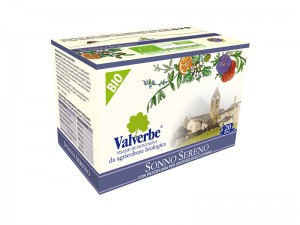
PASSIFLORA, properties – curiosities – uses
Passion flower
With its characteristic flower resembling a coloured star, the Passion Flower is a medicinal plant that is certainly known for its cheerful colours and the rather bizarre shape of its petals and stigmas. Another reason for the plant’s fame is undoubtedly the fruit it produces, known as ‘Maracuja’ and more commonly called ‘Passion Fruit‘.
What not everyone knows is that the Passion Flower, thanks to its numerous properties, is also widely used in herbal medicine and is used in the preparation of infusions and herbal teas.
In this article we will therefore discuss:
Scientific name: Passiflora incarnata
Family: Passifloraceae
Other names: Passion Flower, Maracuja.
The plant
There are several species of Passiflora, used as ornamental plants (e.g. Passiflora caerulea) or as fruit plants (Passiflora edulis, better known as Maracuja). The species most commonly used in herbal medicine is Passiflora incarnata. For the sake of clarification, taxonomists consider Passiflora incarnata to be synonymous with Passiflora edulis, even though the two plants differ in chemical composition.
Belonging to the Passifloraceae family, Passiflora incarnata is a climbing plant with stems that can reach 9 metres and which twine around itself with tendrils. The flowers are white-purple and the leaves are deeply lobed. The fruit is a yellow berry with many seeds wrapped in a jelly-like pulp – the maracuja.
Although widely cultivated in Europe, passionflower is native to the groves and undergrowth of southeastern North America and several areas in Asia and Australia.
Passion Flower properties
What is Passion Flower good for and what are its benefits?
Modern phytotherapy recommends Passion Flower not only to promote regular gastrointestinal motility, but also for relaxation in cases of stress and to promote sleep. Its mildly sedative action on the central nervous system is due to flavonoid components such as hyperoside, vitexin and isovitexin, which are present in the aerial part of the plant. Despite its tranquillising effect, it is a perfectly safe plant with no known contraindications. In addition, unlike many tranquillising and hypnotic drugs, passion flower has no depressive effects and can therefore be used for longer periods.
Herbal uses of Passion Flower
There is only one question that arises at this point: how to use passion flower?
Its use dates back to the distant past, when it was discovered by the native American population. The crushed leaves were used to relieve swelling, bruises and wounds. The pulverised root, infused in water, was used for weaning children and for ear infections. Herbal tea made from the aerial part was believed to calm the nerves.
It is because of this last use that Passion Flower is still used in modern herbal medicine.
Because of its relaxing effect, which relieves stress, aids sleep and promotes mental well-being, Passion Flower is used in relaxing, soothing herbal teas that are particularly good before bedtime.
Some questions related to this topic might be:
When to take Passion Flower?
Passion Flower is used to treat insomnia or problems related to anxiety and nervousness. It is also prescribed to counteract gastrointestinal disorders.
Can Passion Flower be taken during pregnancy?
Given the critical and delicate nature of the period of pregnancy, the use of Passion Flower is not recommended during pregnancy and breastfeeding. It is also not recommended for use in infancy.
Curiosity about the Passionflower
- The Passion Flower does not owe its name to the love passion, but to the Passion of Christ. In the 17th Century the Jesuits on a mission in South America got to know the plant and wanted to read its characteristics as a symbol of the Passion and death of Jesus, a sort of “botanical lesson on Calvary”. The three styles of the pistil represent the three pins used to crucify Jesus. The five anthers on the stamens, on the other hand, symbolise the five wounds on his body or, according to another tradition, the sponge with which he was given a drink on the cross. The thin white and purple filaments surrounding the flower’s reproductive organs then become an image of the crown of thorns. The five petals, united with the five sepals, represent the ten apostles who remained faithful (excluding Judas Iscariot, who betrayed Jesus, and Peter, who denied him three times). In the lobed leaves, finally, one could see the hands of Christ’s persecutors holding whips (tendrils).
In which Valverbe products you can find it
Let yourself be lulled into the sweet embrace of Passion Flower before going to sleep. Discover in our store the herbal tea that best suits your needs. Click here!
Discover the pleasure of a natural rest with herbal tea containing Passion flower!






No Comments